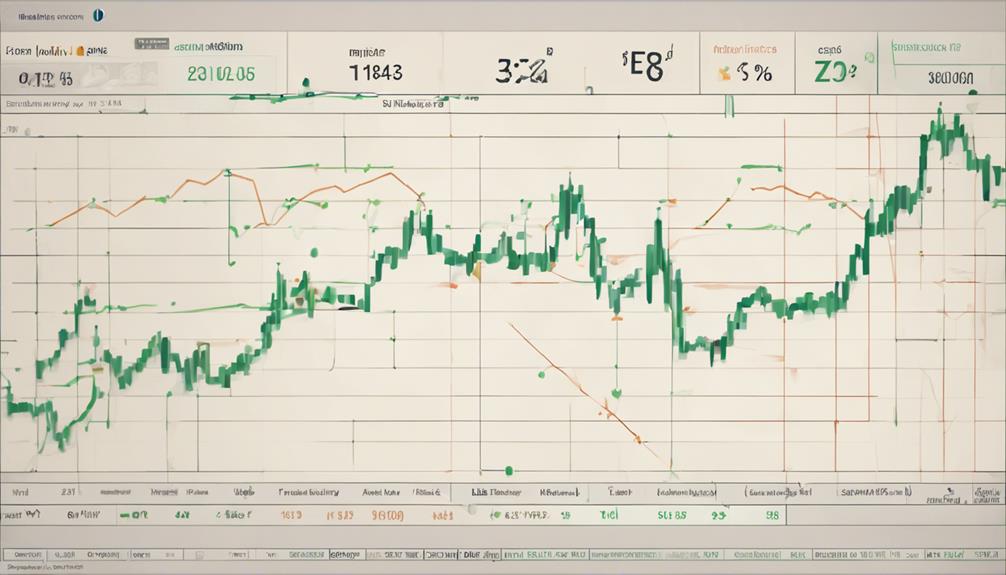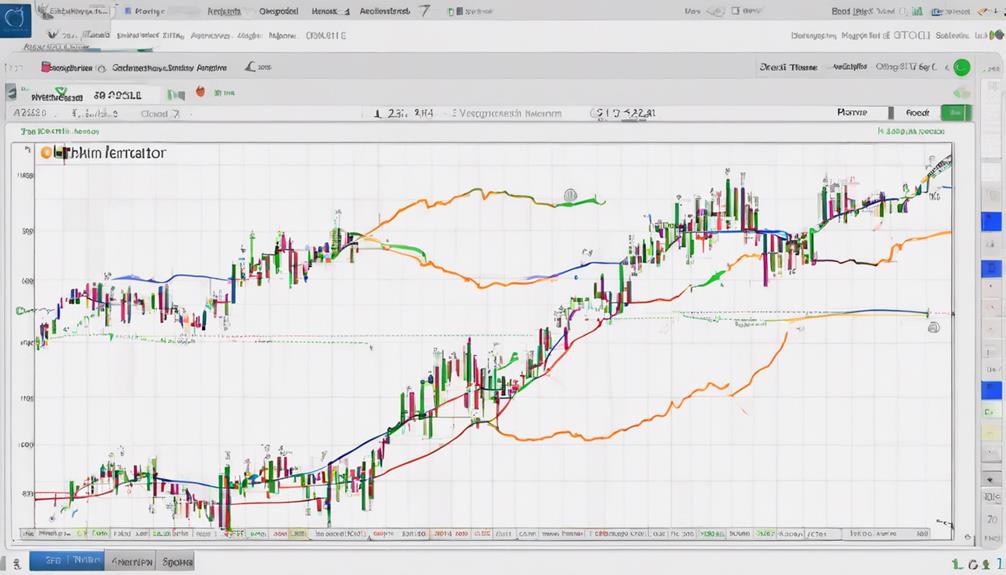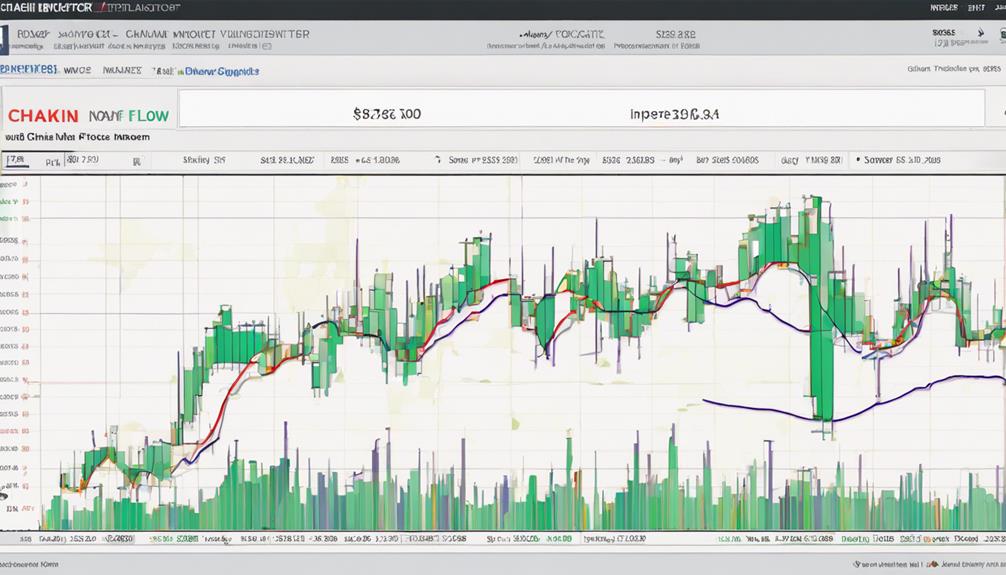Chaikin Money Flow (CMF) stands out as a reliable tool for long-term investments due to its unique ability to gauge trend strength effectively, offering investors a strategic advantage in analyzing stock trends over extended periods.
By focusing on utilizing CMF(60-120) for extended studies, traders can pinpoint opportune moments for entering and exiting long-term positions, capturing substantial portions of upward market movements.
With its emphasis on combining volume and price, CMF provides a comprehensive view of market dynamics, minimizing false signals and offering precise buy/sell indicators.
Stay tuned to learn more about how CMF enhances long-term investment strategies and the key factors to consider for successful implementation.
Overview of Chaikin Money Flow
Invented by Marc Chaikin, Chaikin Money Flow (CMF) represents a volume-weighted average that assesses accumulation and distribution within the market. This technical analysis indicator focuses on the flow of money into or out of a security by comparing closing prices to high and low prices over a specific period, typically 21 days.
Positive CMF values above the zero line indicate buying pressure and market strength, while negative values below the line suggest selling pressure and market weakness. CMF's ability to signal buy and sell opportunities based on the crossover of the zero line makes it a valuable tool for long-term trend analysis.
Traders often use trend lines or support/resistance levels in conjunction with CMF to confirm breakout directions for making informed investment decisions. For longer-term studies, employing CMF(60-120) can help investors identify entry and exit points, capturing significant portions of uptrends in stocks over extended periods.
Benefits for Long-term Investing

Analyzing stock trends over the long term, Chaikin Money Flow (CMF) provides valuable insights for investors seeking to make informed decisions based on trend strength and entry/exit points. When considering long-term investments, CMF offers several benefits:
- Identifying Trend Strength: CMF helps investors gauge the strength of a trend over an extended period, allowing for more informed decisions on long-term trades.
- Entry and Exit Points: By utilizing CMF(60-120) for longer-term analysis, investors can pinpoint optimal entry and exit points for their trades, enhancing the potential for profitable outcomes.
- Monitoring Institutional Activity: Understanding institutional activity through CMF can provide valuable insights into market movements, aiding in making informed decisions for long-term investments.
- Correlation to Price Movement: CMF's ability to capture the correlation between strong money flow and price movement over several months is crucial for identifying trends and making informed long-term investment decisions.
Considering these factors, CMF stands out as a valuable tool for investors looking to navigate the complexities of the market and make strategic long-term investment choices.
Interpretation and Analysis Techniques

Chaikin Money Flow (CMF) offers a robust framework for interpreting and analyzing stock trends through established techniques designed to enhance decision-making processes in long-term investments. By incorporating both volume and price action, CMF provides valuable insights into trend strength, aiding in the identification of optimal entry and exit points for long-term trades. The use of CMF(60-120) for extended studies enables investors to capture a significant portion of uptrends in stocks, making it a valuable tool for long-term investment strategies.
One key aspect of interpreting CMF is its ability to generate buy/sell signals when crossing zero, indicating potential shifts in market sentiment. Monitoring consistent strong money flow over 6-9 months can further reinforce long-term investment decisions by highlighting sustained market trends. Additionally, analyzing divergences between price and money flow, understanding institutional activity insights, and recognizing the impact of large institutional investors are crucial components in leveraging Chaikin Money Flow for successful long-term investments.
Case Studies of Successful Implementation

Utilizing proven strategies and analytical tools in long-term investment planning has been instrumental in the successful implementation of Chaikin Money Flow (CMF) for investors seeking to optimize their portfolio performance. When examining case studies of successful CMF implementation, several key points emerge:
- Identifying Entry and Exit Points: Successful investors use CMF(60-120) to pinpoint optimal entry and exit points, focusing on long-term stock trends where buying and selling pressure are most evident.
- Monitoring Institutional Activity: Keeping a close eye on institutional activity provides valuable insights into market dynamics, helping investors align their strategies with significant players in the market.
- Correlating Price Movements: CMF's ability to correlate with price movements over extended periods enables investors to capture substantial portions of uptrends in stocks, facilitating successful long-term trades.
- Implementing Stop-Loss Strategies: Integrating stop-loss strategies alongside CMF analysis is crucial for managing risk and safeguarding investments against potential downturns in the market.
Tips for Integrating CMF Into Your Strategy

Strategically incorporating Chaikin Money Flow (CMF) into your investment approach can enhance your long-term portfolio performance through informed decision-making and risk management.
When using the Chaikin Money Flow indicator for longer-term trades, consider utilizing the CMF(60-120) timeframe to identify entry and exit points accurately. Look for sustained strong money flow lasting 6-9 months to ensure correlation with price movements over time.
Keep an eye out for divergences between price and money flow indicators, as these could offer valuable market insights for your trading strategy. Additionally, monitoring institutional activity can provide crucial information on market-moving trends, helping you understand the influence of significant investors on stock prices.
To maximize the effectiveness of CMF, consider combining this indicator with others to conduct a comprehensive analysis of market buying and selling pressure. By integrating these tips into your strategy, you can leverage the power of CMF to make well-informed decisions and manage risks effectively.
– Is Chaikin Money Flow Indicator Suitable for Both Long-term Investments and Commodities Trading?
The Chaikin Money Flow Indicator for commodities is a versatile tool that can be used for both long-term investments and commodities trading. Its ability to measure the strength of buying and selling pressure makes it a valuable resource for any trader looking to make informed decisions in the market.
Frequently Asked Questions
What Is the Best Setting for Chaikin Money Flow?
The optimal setting for Chaikin Money Flow (CMF) is generally a longer period, like CMF(60-120), which enhances accuracy in identifying entry and exit points. Longer CMF periods are beneficial for capturing sustainable trends and reducing market noise.
Is Chaikin Money Flow a Good Indicator?
Chaikin Money Flow is a valuable indicator for long-term investments due to its ability to analyze trends by combining volume and price. It provides buy/sell signals when crossing zero and offers insights into institutional activity.
How Does Chaikin Money Flow Work?
Chaikin Money Flow (CMF) assesses market strength by analyzing accumulation and distribution levels based on volume. It confirms breakout directions and triggers buy/sell signals. Calculated over a 21-day period, CMF is a valuable tool for identifying entry and exit points in trades.
What Is the Difference Between Chaikin Money Flow Index and Money Flow Index?
Chaikin Money Flow (CMF) incorporates volume and price for longer-term trend analysis. In comparison, Money Flow Index (MFI) focuses solely on price movements. CMF's zero line crossings offer buy/sell signals, while MFI relies on overbought/oversold levels.
Conclusion
In conclusion, Chaikin Money Flow stands out as an invaluable tool for long-term investors. It offers a comprehensive analysis of trend strength and entry/exit points. Its incorporation of both volume and price data provides a holistic view of market trends, reducing the occurrence of false signals.
By monitoring persistent strong money flow, detecting divergences, and considering institutional activity, investors can make informed decisions for successful long-term trades.
